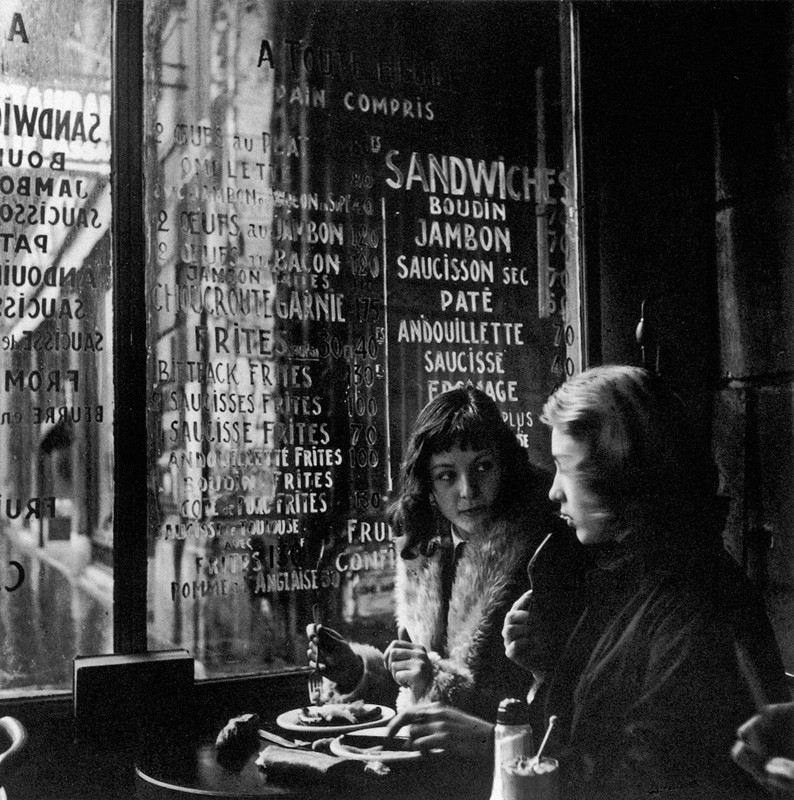Brasserie vs. Bouillon
The traditional brasserie is one of the most convivial, brightly lit and bustling, with clients from all horizons, amidst a ballet of waiters in long black aprons and a menu of traditional dishes. The fare is simple—from œufs mayonnaise, soupe à l’oignon, choucroute garnie and steak frites, to oysters shucked at the raw bars that occupy the corners of their terraces. The beverage of reference is beer, even if good wines are also served. The most legendary Parisian brasseries date back to the beginning of the 20th century, and are often charged with history and beautiful baroque decors.
The brasserie’s less opulent cousin, the bouillon, first appeared around 1860 and was essentially working class, with a simpler cuisine based on—as the name implies—bouillons or broths enriched with bits of meat and vegetables. They evolved from what was believed to be the very first restaurant opened in Paris in 1765 by a soup vendor named Boulanger.
Bouillon Julien
A beautiful art deco bouillon in Paris. Cheap, lovely and good.
From the Website:
Despite having operated as a brasserie for many years, Julien was created as a ‘bouillon’ in 1906. In 2018, it has reverted to being a ‘bouillon’ once more.
A ‘bouillon’ is a restaurant first created in the late 19th and early 20th centuries serving traditional French cuisine, in particular a ‘bouillon’ (broth). The particuliarity of the ‘bouillon’ was to serve good quality food at affordable prices. In 1900, nearly two hundred and fifty bouillons could be found in Paris. Today, Julien is one of only a small handful of authentic restaurants of this kind that remain in the French capital. Bouillon Julien is one of the most beautiful restaurants in Paris, if not the world. It remains one of the best preserved examples of the Art Nouveau style. Over the years, it has been the favoured haunt of many well-known cultural figures. Edith Piaf and her lover, Marcel Cerdan, the champion boxer, would frequently dine at ‘table n. 24’.
The building was constructed in 1906 by the French architect Edouard Fournier and was decorated by a number of exceptional artisans working in the Art Nouveau style. Armand Segaud created the peacock panels, while the mahogany bar is attributed to famed ‘Ecole de Nancy’ woodworker Louis Majorelle.
https://www.bouillon-julien.com/beau
Bouillon Chartier
https://www.bouillon-chartier.com/grands-boulevards/
Le Bar de Bouillon
Bouillon Pigalle
https://www.bouillonpigalle.com
Bouillon Racine
The beginning of the twentieth century saw the birth of Bouillon Racine as we currently know it. It was in the atmosphere of Art Nouveau where Parisian workers and then the upper-class city folk first met. The first Bouillons appeared in 1855 thanks to a clever butcher, Pierre Louis Duval. He proposed a single dish of meat and a bouillon (soup/stock) to the workers of the Halles. In 1900, nearly 250 Bouillons could be found in Paris. They became the first chain of restaurants for the working class. Meanwhile, the charm of Art Nouveau spread through Europe, in architecture, furniture and decoration. The Universal Exhibition in Paris accelerated its influence. Restaurants followed the trend. In 1904, a new bouillon with a luxurious Art Nouveau decoration was born. It was a Bouillon Chartier.
https://bouillonracine.fr/en/our-history/
Additional Resources
https://devourparisfoodtours.com/blog/bouillons-paris/
